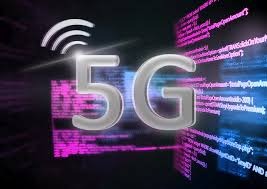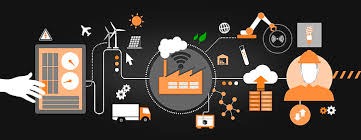How 5G Expansion is Quietly Reshaping Our World: A Glimpse Into the Connected Future
It used to be that a new generation of wireless technology meant faster downloads and clearer calls. With 5G, though, things are different. Way different. It’s not just a step forward—it’s an entire leap into a future where nearly every part of life and work touches a high-speed, low-latency network. It’s invisible, but it’s everywhere. And its reach is only growing.
Let’s break it down and talk about what the 5G expansion really means—beyond the tech headlines and flashy marketing campaigns.

So, What’s All the Hype?
If you’ve ever waited painfully for a webpage to load or watched your video buffer on a supposedly strong connection, you’ll get why speed matters. 5G brings gigabit-per-second speeds, sure, but that’s just the tip of the iceberg.
The real game-changer? Latency. We’re talking near real-time responsiveness—about 1 millisecond or less. That’s important if you’re driving a smart car that has to make a split-second decision, or a surgeon’s robotic arm is performing a remote operation thousands of miles away.
And it’s not just about speed or precision. It’s about capacity. 5G can support a massive number of simultaneous connections, making it ideal for smart cities, connected factories, and sprawling sensor networks that make everything from agriculture to logistics run smoother.
From Theory to Reality: The Global Rollout
The expansion of 5G is already underway, but like a jigsaw puzzle, some areas are nearly complete while others are just getting started. South Korea and China were early to the game, launching widespread networks before many Western countries could clear their regulatory red tape. The U.S. isn’t far behind, but its approach is different—driven by telecom competition and private-sector rollout instead of central planning.
In Europe, progress varies by country. Some are quickly advancing, others are stuck in debates over health risks or cost-benefit trade-offs. Meanwhile, countries in Africa and parts of Latin America are taking tentative steps toward adoption, slowed down by infrastructure and affordability issues.
It’s messy. But it’s moving.
The Business End of 5G
Behind the scenes, businesses are quietly reworking their models in anticipation of what 5G makes possible. Factories are installing sensors that adjust operations in real time. Retailers are testing virtual dressing rooms. And hospitals? They’re banking on 5G to support remote diagnostics and even remote surgeries in the near future.
The numbers don’t lie: analysts predict 5G will contribute around $13 trillion to the global economy by 2035. Industries like manufacturing, logistics, finance, and media are all betting big on it.
But there’s a caveat. For smaller businesses, keeping up with this rapid change may mean new costs—infrastructure upgrades, new cybersecurity demands, and staff retraining.
A Few Speed Bumps on the Way
Like any new tech wave, 5G isn’t rolling out without its fair share of challenges.
First, coverage. 5G networks need more cell towers than previous generations, especially for the fastest millimeter-wave spectrum. Those towers have limited range and can be blocked by walls, trees, even rain. That means urban centers get the good stuff first, while rural communities may wait years for comparable service.
Then there’s security. With more devices and more connections comes a larger attack surface. Think of it like leaving more windows open in a house—it only takes one for trouble to get in. 5G demands a new mindset around privacy and cybersecurity, from both companies and consumers.
Let’s not forget the digital divide. As tech races ahead, some communities risk being left behind. That gap isn’t just about connectivity—it’s about access to opportunity.
Health Worries and Green Questions
A few critics are still raising concerns about radiation from 5G antennas, though leading organizations like the WHO have repeatedly said there’s no solid evidence of health risks at current exposure levels.
What does deserve more attention, though, is energy use. More devices, more towers, and more data mean higher electricity demands. Big tech is working on energy-efficient chips and greener infrastructure, but it’s a work in progress.
What’s Coming Next?
Truth is, 5G is still in its early days. Much of what it promises—true smart cities, self-driving cars that actually work without crashing, real-time global collaboration—requires more than just signal coverage. It needs time. And coordination. And trust.
But one thing’s for sure: the world is never going back to how it was before. With each new tower, each upgraded phone, and each newly connected factory, 5G isn’t just expanding. It’s changing how we live, work, and connect.
So no, it’s not just faster YouTube videos or crisper Zoom calls. It’s something much, much bigger.




